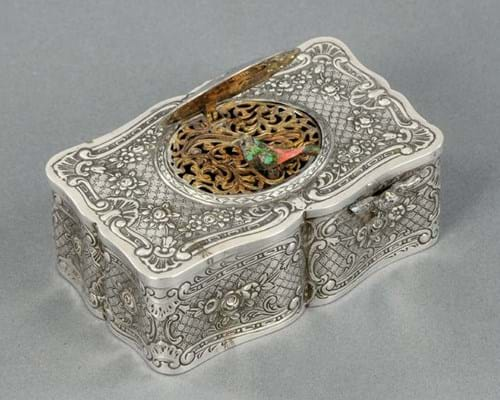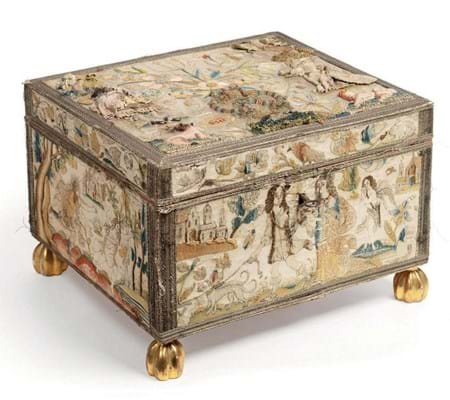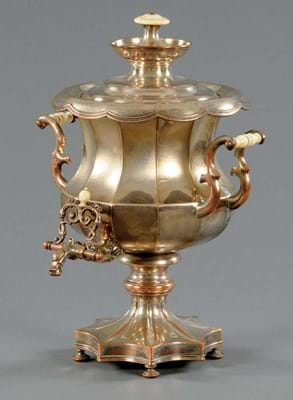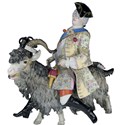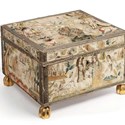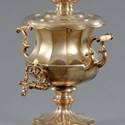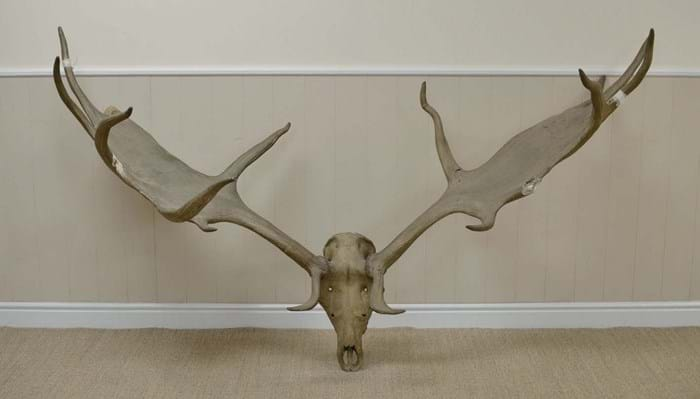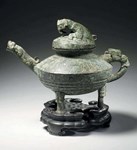Three such events in March with about 4000 lots between them brought worldwide bidding fuelled by increased online action.
In the Lake District, Mitchells (20% buyer’s premium) stretched the usual two-day sale to three days to accommodate its largest-ever entry at 2180 lots, which attracted a record number of 1450 registered online buyers from round the world.
Across the Pennines in Leyburn, Tennants’ (20% buyer’s premium) 918-lot spring sale, encompassing everything from dog dollars to Ming vases, took a hammer £1.48m.
And in Herefordshire, Brightwells (17.5% buyer’s premium) recorded its highest total to date, a shade over £600,000 at the Leominster auction house’s equally wide-ranging spring sale on March 20-21.
The 1100 lots, 75% of which sold, included five-figure bids for paintings (see Art Market) and Chinese furniture (to be covered in a future issue).
Brightwells
English furniture chugged along but sold steadily enough. An 18th century oak lambing chair took £1100, an early 19th century housekeeper’s oak cupboard made £1750 and a circular gilt-framed 19th century convex wall mirror, unusually large at 3ft 5in (1.05m) diameter and with some slight damage, sold for a five-times estimate £2900.
From the same aristocratic estate as much of the furniture came a pair of Irish elk antlers. These remains of Megaloceros giganteus, which roamed northern Europe for about 400,000 years before becoming extinct about 11,000 years ago, have surfaced from Irish peat bogs from time to time and are popular when they appear at auction.
The 7ft (2.13m) wide antlers at Brightwells were catalogued a/f and estimated at £2000-3000, but 10 phone bidders fought for them before they sold to a private bidder at £16,000.
International interest emerged with buyers from 19 countries, from New Zealand to the US via Vietnam and all over Europe, in action throughout the sale, not just for the 69 lots of tribal art which were topped by a 2ft 1in (63cm) long Aboriginal parrying shield at £3000, 10 times the lower estimates.
European craftsmanship ranged from a 17th-18th century Brussels Verdure tapestry to an ever-popular Meissen porcelain figure.
The 8ft 10in x 15ft 6in (2.69m x 4.73m) wall hanging depicting a hunting scene of horse riders, dogs and deer, went to a local buyer at a mid-estimate £6200,
The 16½in (42cm) tall, 19th century figure after Kaendler, of Count Bruhl’s tailor riding a goat, had some restoration and chips but attracted bids from the Continent before selling to a London specialist at £8200 against a £3000-5000 guide.
Tennants
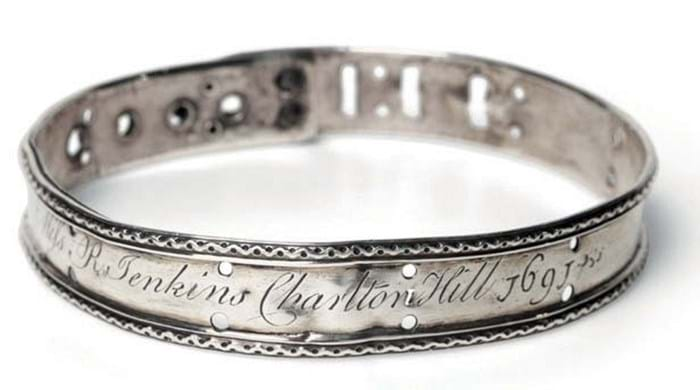
Silver dog collar, 1691 – £2500 at Tennants.
As ever, the tri-annual fine art sale at Tennants also covered the gamut of interests at the March 17 event.
It included Oriental material (to be covered in a future issue) and a £500,000, 232-lot watch and jewellery section which featured the sale’s top-seller, a multi-gemstone and diamond bracelet, signed Cartier but not sold as such. Estimated at £1500-2000, it sold at £140,000.
A remarkable collection of 29 silver, brass and steel dog collars ranging from the late 17th to the early 20th centuries inspired some of the most competitive bidding of the sale and totalled £23,230.
The earliest was a 3¾in (9.5cm) diameter silver collar inscribed Miss R Jenkins, Charlton Hill, 1691, which went to an American bidder at a mid-estimate £2500. The most expensive, going to a different American collector, was a 7½in (19cm) silver collar by Robert Garrard, London 1859, inscribed L. Denison. Presented by Lord Londesborough. Estimated at £500-700, it sold at £4200.
Tennants horology specialist Adam Wasdell considered the results for longcase clocks were “particularly encouraging in a market that has struggled somewhat in recent years”. This sale produced “a larger number than usual of bidders competing for strong lots by top makers”.
One longcase was signed Joseph Windmills, London. The 7ft 5in (2.26m) tall, burr walnut case with side viewing panels and glazed lenticle to the trunk contained a six pinned and latched movement with pillars, anchor escapement and outside countwheel striking on a bell.
The caddied top had been rebuilt, the brass finials were later and some of the veneers were lifting but the within-estimate £11,000 bid by a private northern English buyer did not, in historic terms, look a huge sum for a Windmills clock.
However, another c.1695 longcase by a much less well-known maker certainly looked a strong seller.
The mulberry case was smaller at 6ft 6in (2m) tall and had a flat top but was otherwise similar to the Windmills, as was the eight-day movement.
Signed Peter Walker, Wild Street End, London to the silvered chapter ring of the 10¾in (27cm) square brass dial, it was estimated at £5000-7000 and sold to another northern private buyer at £15,000.
Among the collectables, one of the most eye-catching items was a c.1670, 12in (31cm) wide needlework casket with raised stumpwork figures, possibly Charles II and Catherine of Braganza, walking their dogs with a cupid, buildings and flowers in the background. It sold to a UK collector just above estimate at £9000.
Mitchells
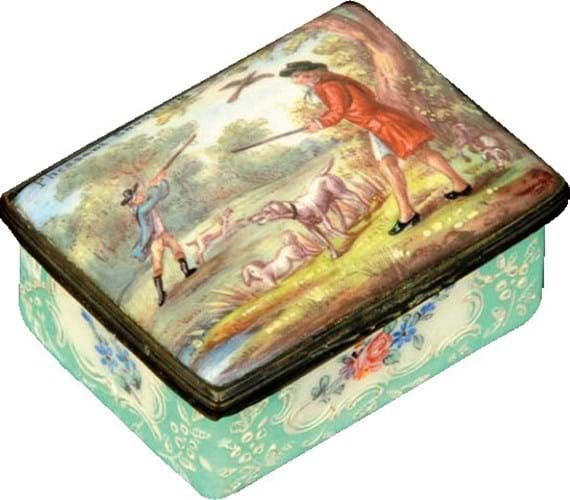
Enamelled Staffordshire snuff box – £880 at Mitchells.
Mitchells’ March 21-23 sale, in Cockermouth, was notable not just for its size or number of online bidders but for how many foreign buyers contributed to the £385,000 total.
A Singapore collector took a 1966 Rolex Submariner watch Model 5513, at a double-estimate £14,100. That was the biggest price of the day, but the biggest surprise came courtesy of a collector bidding from Lithuania.
His target, a 20in (50cm) 18th century silver-plated copper samovar, was estimated at £70-100 but sold at £3900. Although catalogued as English (hence the estimate) it was probably Russian.
In the silver section proper, the best-seller was a pretty Continental automaton musical bird box in the manner of those produced by the German firm Karl Griesbaum from the 1920s.
The 4in (10cm) wide box decorated with shells and flowers was struck 800 to the underside alongside the crowned letter T. Complete with brass winding key, it went above estimate to a Belgian buyer at £2300.
The sale also featured a collection of 20 Swiss musical boxes. The top-seller was a 2ft 3in (69cm) tall, late 19th century, penny-in-the-slot box playing 12 airs. In a rosewood case, with bells and a marionette automaton, it doubled the mid-estimate selling at £3900.
Home bidders got more of a look-in when a collection of enamelled 18th and 19th century Staffordshire and Continental snuff boxes was offered in 29 lots, most of which went well above the low three-figure estimates and totalled £9450.
However, four went to a New York bidder including the top lot, a 2½in (6.5cm) wide c.1780 Staffordshire enamel snuffbox decorated to the lid with two figures and gundogs in a landscape titled Pheasant Shooting.
Estimated at £80-180, it sold at £880.



